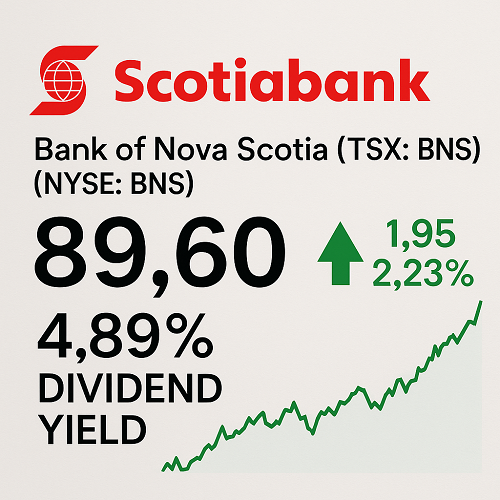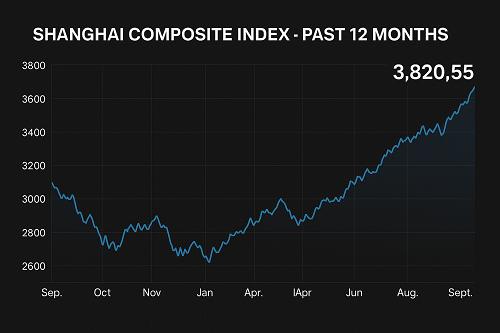The Royal Caribbean Group (RCL) is a leading global cruise operator. An important factor that investors look at is the RCL stock price, as it reflects the company’s market value and potential. Headquartered in Miami, Florida, the group owns multiple cruise brands including Royal Caribbean International, Celebrity Cruises and Silversea Cruises.
Its business model combines:
- Selling cruise‐vacation packages (ticket revenue)
- Capturing on-board revenue (beverages, excursions, premium experiences)
- Managing ship capacity, itineraries, and yield per day (the “cruise industry yield” concept)
- Controlling costs per available passenger cruise day (APCD) and fuel/operational expenses
In recent years, RCL has emphasized yield improvement (charging higher per-day rates), controlling capacity growth (to avoid oversupply), and increasing onboard spend per guest. For example, the company reported that higher pricing and onboard revenues were a key reason for its earnings strength.
Moreover, RCL is branching into river cruises (via new ship orders starting ~2027) as part of its growth strategy.
Recent Performance & Market Context
Strong demand rebound
- RCL recently reported robust bookings and improving forward demand into 2025, driven by strong consumer appetite for travel post-pandemic.
- In Q4 (or latest quarter) RCL beat on earnings and benefited from higher onboard spend and tight control of capacity yield.
- Analyst note: Younger demographics (Millennials & Gen Z) allocate more to “experience” travel, benefiting cruise operators such as RCL.
Cost headwinds & caution
However, there are caution flags:
- Recently RCL flagged higher costs associated with its newest ship (“Star of the Seas”), which caused a stock dip (~5%) despite strong revenue growth.
- Macro factors like fuel prices, inflation, capacity supply in the cruise industry, and travel disruptions remain potential risks.
- A widely cited forecast projected RCL’s stock could face downside under certain scenarios.
Analyst consensus snapshot
- According to MarketBeat, RCL has a consensus price target around US$ 326.95, representing ~16.6% upside from ~US$280.31 at time of writing.
- Trendlyne reports a target of ~US$ 356 for FY25, with revenue growth ~9.2% and profit growth ~49.2%.
Key Fundamental Metrics & Valuation
Here are some recent key metrics and valuation insights for RCL (as publicly available):
- P/E ratio: ~23.9x (from SimplyWallSt data).
- Average analyst price target: ~US$ 358.43 (Zacks) for the next 12 months, range US$270-420.
- Long-term metrics: Some long-range forecasts suggest very different outcomes (e.g., Stockscan forecasts average ~US$89 in 2025 under one scenario) — highlighting divergence of assumptions.
- Growth metrics: Forward revenue growth and profit growth expectations are elevated, especially given the rebound in travel.
Valuation commentary
- At ~23.9x P/E, RCL is valued at a moderate premium relative to some peers in the leisure/travel sector, but given the risk/reward of a strong demand rebound, the valuation might be justified if execution holds.
- The upside to analyst targets (~+16% to ~+30% depending on source) suggests a moderate bullish case, while some long-term bear scenarios suggest significant downside — likely reflecting sector risk.
Growth Drivers & Risks
Growth drivers
- Strong post-pandemic travel rebound: As travel restrictions eased, demand for cruises surged, and RCL is a direct beneficiary.
- Yield improvement & onboard revenue: RCL has increased pricing and onboard spend per guest, which improves margins.
- Brand portfolio & ship expansions: With multiple brands and a large fleet, RCL has scale advantages. It is also expanding into river-cruise markets (premium niche) from ~2027.
- Favourable demographic trends: Younger travellers are seeking “experiences” and multi-destination travel, which aligns with cruise demand.
- Cost discipline: The company emphasises moderate capacity growth and cost control, which can protect margins in cyclical travel markets.
Key risks
- Rising operating costs: Fuel costs, ship maintenance, and new ship delivery costs can eat into margins (as seen with “Star of the Seas”).
- Macro travel risks: Global economic slowdown, inflation, or geopolitical/travel disruptions could reduce discretionary travel spending.
- Overcapacity/competition: Cruise operators adding capacity could suppress pricing or margin.
- Industry cyclicality: The cruise industry is inherently cyclical, and negative surprises (e.g., health issues, regulatory changes) can hurt.
- High expectations baked in: Some forecasts assume strong growth; if bookings or yields falter, downside risk is elevated (as per bearish long-term forecasts).
2025-26 Outlook & Analyst Forecasts
2025 outlook
- RCL expects continuing strong demand for 2025, with earnings growth of ~23 % + reported earlier.
- Forward bookings are solid; management commentary suggests optimism heading into 2026.
- Analysts’ consensus price targets (~US$ 326-356) imply upside of ~15-30% from current levels if the thesis holds.
2026 & beyond
- Some models (e.g., LongForecast) project RCL could reach US$700 + by late 2026 under aggressive growth assumptions (100%+ upside).
- Conversely some longer range models warn of much lower levels (~US$89 average in 2025 for worst case).
- The key determinant will be whether yield growth + onboard revenue gains can offset cost inflation and rising capacity.
- For investors, the potential reward is meaningful but so is the risk of downside if travel growth slows or costs spike.
Technical & Sentiment Outlook
- Recent sentiment has been positive: strong bookings, earnings surprises, and elevated travel demand.
- However, the bump from cost issues (ship delivery) shows that technical/tactical risks are present.
- From a technical charting perspective, RCL may be within a consolidation or breakout phase (depending on the investor view) — for traders, monitoring support levels, volume, and momentum indicators will be key.
Competitive Positioning & Comparative Peers
RCL operates in a competitive environment alongside peers such as Carnival Corporation & plc (CCL) and Norwegian Cruise Line Holdings Ltd. (NCLH).
- Compared to peers, RCL has stronger brand portfolio and global reach.
- On valuations and growth prospects, RCL’s upside is similar to or slightly better than peers if travel demand continues.
- Peer risk: If supply increases or guests shift preferences, all players are exposed.
Investment Thesis: Pros vs Cons
Why invest
- Strong rebound in travel demand which benefits RCL directly.
- Yield improvement and elevated onboard spending enhance margin potential.
- Analyst consensus suggests moderate upside (~15-30%) in next 12-24 months if growth targets met.
- Thematic tailwinds: travel “experience economy”, younger consumer interest in cruises.
Why caution
- Costs are rising, and margin expansion is not guaranteed.
- High expectations mean execution risk is elevated—if bookings or yields disappoint, there could be downside.
- The business is cyclical and sensitive to macro/travel disruptions.
- Longer-term projections vary widely, underscoring uncertainty.
My verdict
For investors with a moderately bullish view on global travel and willing to accept sector cyclicality, RCL presents a compelling risk-reward opportunity around current levels. However, if you lean conservative or want lower volatility, you might wait for clearer margin expansion or cost stability before entering.
Frequently Asked Questions (FAQ)
Q1: What is the 12-month price target for RCL?
According to MarketBeat, the consensus price target is ~US$ 326.95 (~16.6% upside). Some other services suggest targets up to ~US$ 356 or more.
Q2: What are the biggest risks for investing in RCL?
Major risks include rising operating costs (fuel, ship delivery), slower travel demand, competitive supply growth, economic slowdown impacting discretionary spending, and execution missteps.
Q3: How does RCL’s valuation compare to peers?
RCL trades at ~23.9x P/E per some data. This is moderate for the sector given expected growth, but there’s not a huge margin of error.
Q4: Is RCL suitable for long-term investors?
If you believe in the long-term growth of travel and experience economy, and RCL can sustainably grow yields while managing costs, yes. But it is still a cyclical and higher-risk business compared to non-cyclical stocks.
Q5: What are key catalysts to watch?
- Booking trends and forward occupancy rates
- Yield per cruise day and onboard revenue growth
- Cost trends, especially fuel and new-ship costs
- Capacity growth announcements and new ship launches
- Macro environment for travel (consumer sentiment, inflation, geopolitics)
Conclusion
In summary, the Royal Caribbean Group (RCL) sits at a favorable point in its cycle: strong travel demand, improving yields, and a moderate valuation provide a positive setup. Analyst consensus offers a meaningful upside if execution holds. However, the business’s sensitivity to costs and cyclicality means that risks remain non-trivial. Investors should weigh the potential reward against the execution and macro risks.
If you’re bullish on travel and willing to accept some volatility, RCL could be a compelling play. If your preference is for lower risk or higher margin of safety, either waiting for clearer cost trends or diversifying across travel/experience stocks might be wiser.





 XAUT-USD
XAUT-USD  AMD
AMD  MARA
MARA  SHOP
SHOP  BULL
BULL  CL=F
CL=F